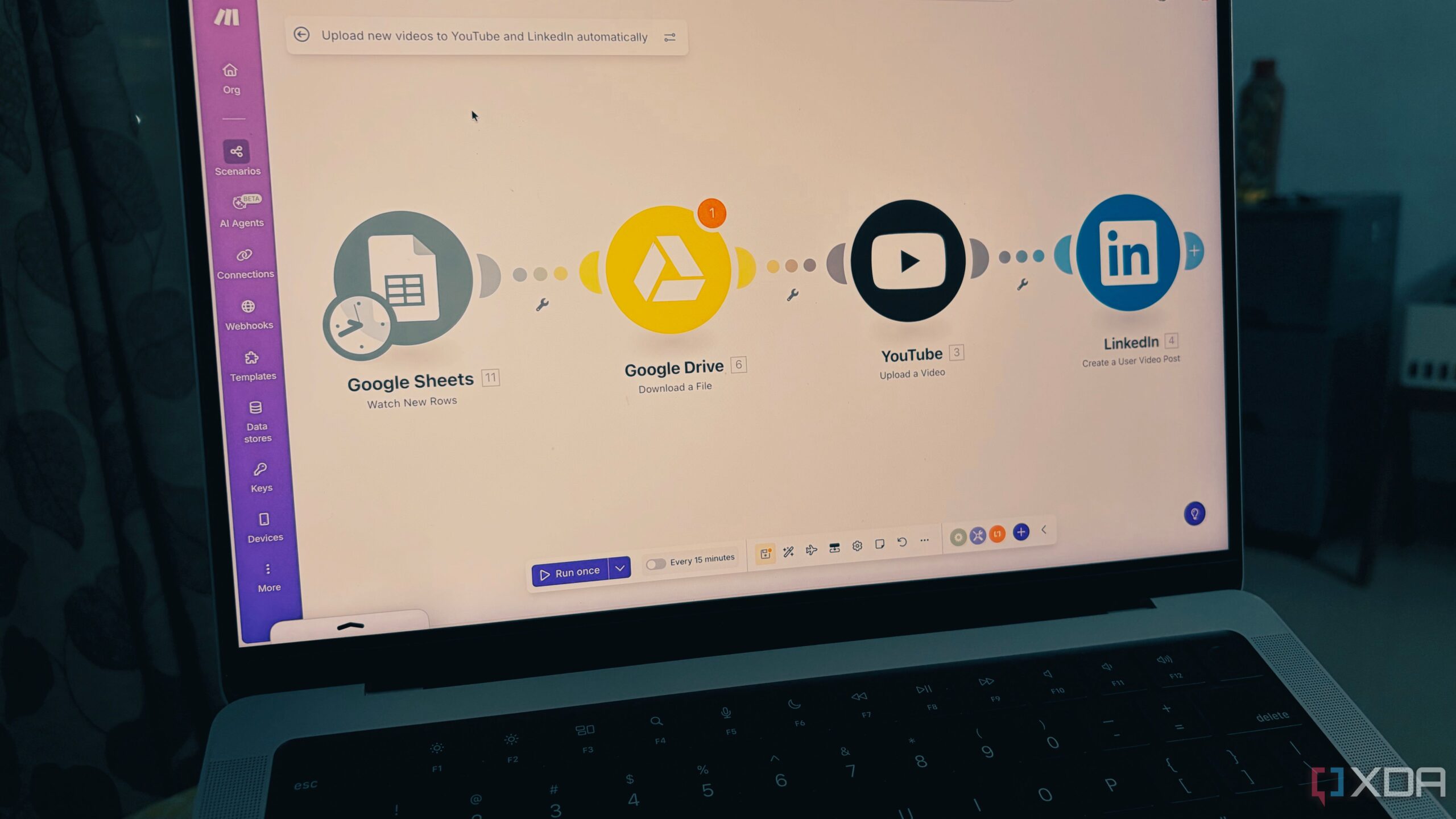Top Stories
Automation Revolution: Why I’m Switching to Make Today

BREAKING: A significant shift in the automation landscape is underway as users are abandoning traditional platforms like Zapier and n8n for the more dynamic solution, Make. This urgent move highlights the increasing demand for advanced workflow capabilities.
Many users have relied on Zapier and n8n to streamline their operations, but as automation needs evolve, they are hitting limitations. Just today, experts are reporting that Make offers an intuitive, visual workflow that better handles complex data management, prompting users to switch immediately.
Make’s visual canvas transforms how automations are perceived and built. Unlike Zapier’s rigid, text-heavy workflows, Make provides a blank canvas where users can create workflows—termed “Scenarios”—in a visually engaging drag-and-drop format. This means that users can map out their business logic clearly, allowing easy communication of workflows to teammates.
For many, the testing process is a game changer. With Zapier, users often struggle with complex task histories and debugging. However, Make’s testing mode allows users to watch data flow in real time, revealing errors instantly. If a filter fails, the line turns red, enabling immediate action. This feature is critical for organizations where time is of the essence.
Moreover, Make outperforms Zapier in terms of automation capabilities. Users can perform over 80 different actions within Make compared to just 20-30 in Zapier. This depth allows for seamless two-way automation without convoluted workarounds, making it a more powerful choice.
Cost-effectiveness is another compelling reason for the switch. Zapier’s pricing structure can quickly add up, especially for complex workflows that consume multiple tasks. A single run can easily use 10-15 tasks, leading to soaring monthly bills. In contrast, Make’s pricing is more generous, allowing users to manage their usage strategically.
The switch to Make is gaining momentum as it provides a balance of visual clarity, complex logic handling, and cost-effective scaling—qualities that many businesses are desperately seeking. While Zapier offers a solid foundation for simple tasks, Make fills the void for those who need advanced capabilities without the burdens of self-hosting or steep learning curves associated with platforms like n8n.
Experts urge users to act quickly: “If you’re frustrated with the limitations of your current automation tools, give Make a shot today. It could redefine your operational efficiency,” a leading automation specialist stated.
For those who find Make unsuitable, alternatives like Activepieces are emerging, providing additional options in the automation space.
This urgent transition illustrates a broader trend in the automation industry, where businesses are moving towards solutions that offer not just speed but also flexibility and depth. As more users make the switch, the automation landscape is set to transform dramatically.
Stay tuned for further updates on this developing story as more businesses adopt Make to enhance their operational workflows.
-

 Science2 months ago
Science2 months agoInventor Achieves Breakthrough with 2 Billion FPS Laser Video
-

 Health2 months ago
Health2 months agoCommunity Unites for 7th Annual Into the Light Walk for Mental Health
-

 Top Stories2 months ago
Top Stories2 months agoCharlie Sheen’s New Romance: ‘Glowing’ with Younger Partner
-

 Entertainment2 months ago
Entertainment2 months agoDua Lipa Aces GCSE Spanish, Sparks Super Bowl Buzz with Fans
-

 Health2 months ago
Health2 months agoCurium Group, PeptiDream, and PDRadiopharma Launch Key Cancer Trial
-

 Top Stories2 months ago
Top Stories2 months agoFormer Mozilla CMO Launches AI-Driven Cannabis Cocktail Brand Fast
-

 World2 months ago
World2 months agoIsrael Reopens Rafah Crossing After Hostage Remains Returned
-

 Entertainment2 months ago
Entertainment2 months agoMother Fights to Reunite with Children After Kidnapping in New Drama
-

 World2 months ago
World2 months agoR&B Icon D’Angelo Dies at 51, Leaving Lasting Legacy
-

 Business2 months ago
Business2 months agoTyler Technologies Set to Reveal Q3 Earnings on October 22
-

 Health2 months ago
Health2 months agoNorth Carolina’s Biotech Boom: Billions in New Investments
-

 Health2 months ago
Health2 months agoYouTube Launches New Mental Health Tools for Teen Users









